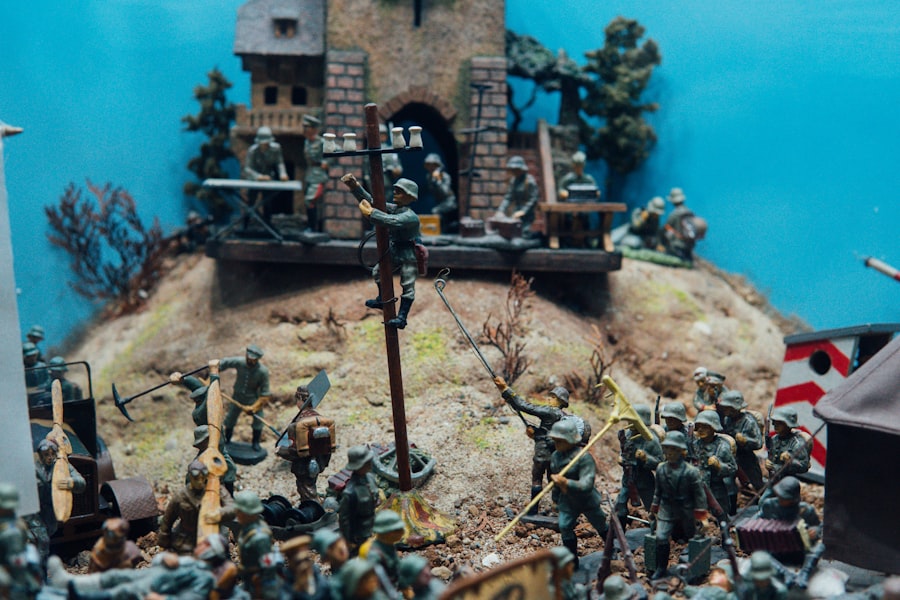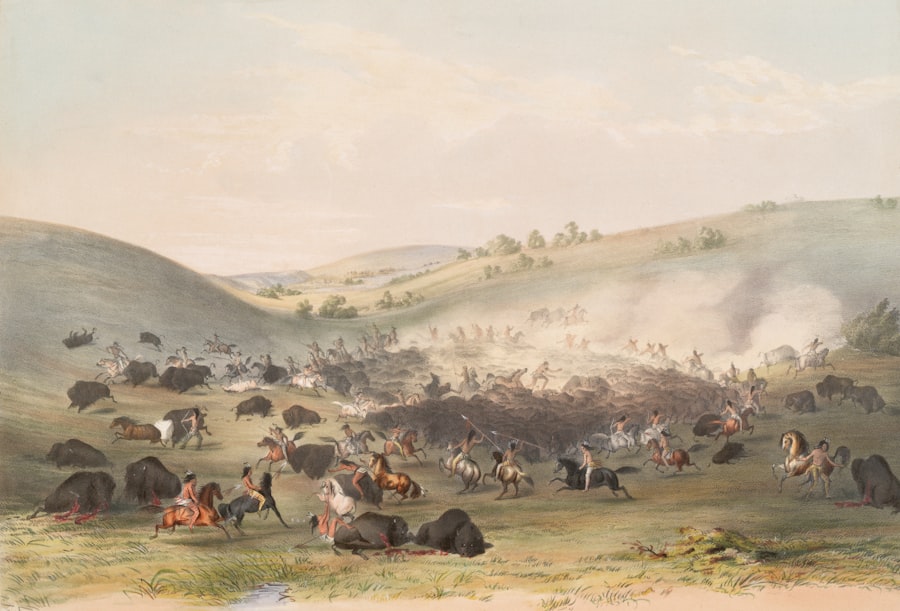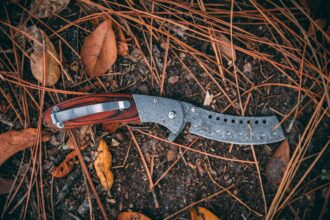The Hussite War Wagon stands as a remarkable symbol of innovation in medieval warfare, particularly during the tumultuous period of the Hussite Wars in the early 15th century. This unique military vehicle, developed by the followers of Jan Hus, was not merely a means of transport but a formidable instrument of battle that combined mobility, protection, and firepower. The war wagon was a response to the socio-political upheaval of the time, reflecting the Hussites’ need for effective defense against their adversaries, particularly the Catholic forces.
Its design and tactical use would leave an indelible mark on the landscape of military history. The significance of the Hussite War Wagon extends beyond its physical attributes; it encapsulates a revolutionary approach to warfare that emphasized adaptability and resourcefulness. As the Hussites faced overwhelming odds, their ability to innovate and utilize available resources became crucial.
The war wagon was not just a tool of war; it represented a shift in military thinking, where traditional methods were challenged by new strategies that prioritized both offense and defense. This article delves into the origins, design, tactical applications, and lasting impact of the Hussite War Wagon, illuminating its role in shaping medieval combat.
Key Takeaways
- The Hussite War Wagon was a revolutionary medieval siege engine used by the Hussites in the 15th century.
- The War Wagon was developed as a response to the need for mobile and heavily armored artillery on the battlefield.
- The design and construction of the War Wagon involved a combination of wooden planks, metal armor, and a variety of weapons such as cannons, crossbows, and firearms.
- The War Wagon played a crucial role in medieval warfare, providing protection for troops and firepower against enemy forces.
- The legacy of the War Wagon influenced military technology and tactics, paving the way for future developments in siege warfare and armored vehicles.
Origins and Development of the War Wagon
The origins of the Hussite War Wagon can be traced back to the socio-political climate of Bohemia in the early 15th century. The Hussite movement emerged as a response to widespread corruption within the Catholic Church and a growing desire for reform. Jan Hus, a key figure in this movement, advocated for religious and social changes that resonated with many common people.
As tensions escalated between the Hussites and the established Church, armed conflict became inevitable. The Hussites needed a means to defend themselves against better-equipped foes, leading to the development of the war wagon. Initially, these war wagons were simple carts used for transport and logistics.
However, as the conflict intensified, they evolved into fortified vehicles equipped with various weaponry. The Hussites began to modify these carts by adding wooden planks and metal reinforcements to create a mobile fortress on wheels. This transformation was not merely functional; it was a reflection of the Hussites’ ingenuity in adapting to their circumstances.
The war wagon became a symbol of their resistance, embodying their determination to fight for their beliefs while also showcasing their ability to innovate under pressure.
Design and Construction of the War Wagon

The design of the Hussite War Wagon was a testament to both practicality and creativity. Typically constructed from sturdy wood, these wagons were reinforced with iron fittings to withstand enemy attacks. The dimensions varied, but they were generally large enough to accommodate several soldiers and their weaponry while remaining maneuverable on the battlefield.
The construction process involved skilled craftsmanship, as builders had to ensure that each wagon could endure the rigors of combat while providing adequate protection for its occupants. One of the most distinctive features of the war wagon was its armament. Equipped with crossbows, hand cannons, and even larger artillery pieces like small cannons or bombards, these vehicles could unleash devastating firepower on enemy troops from a safe distance.
Additionally, some wagons were designed with a raised platform that allowed archers to shoot from an elevated position, further enhancing their effectiveness in battle. The combination of mobility, firepower, and defensive capabilities made the Hussite War Wagon a formidable presence on the battlefield.
Role of the War Wagon in Medieval Warfare
| War Wagon Role | Details |
|---|---|
| Transportation | Used to transport soldiers, weapons, and supplies to the battlefield. |
| Protection | Provided cover for archers and crossbowmen to fire from a safe position. |
| Intimidation | Imposing presence on the battlefield, instilling fear in enemy forces. |
| Tactical Advantage | Used for flanking maneuvers and as a mobile fortification. |
In medieval warfare, where cavalry charges and infantry formations dominated the battlefield, the Hussite War Wagon introduced a new dynamic that challenged traditional tactics. The war wagon served multiple roles: it acted as a mobile fortress, a platform for ranged attacks, and a means of troop transport. Its versatility allowed Hussite forces to adapt to various combat scenarios, making it an invaluable asset during engagements with enemy forces.
The presence of war wagons on the battlefield often dictated the flow of combat. They provided cover for infantry units and allowed for coordinated attacks against enemy formations. The ability to move these wagons strategically meant that Hussite commanders could create defensive lines or launch surprise assaults when opportunities arose.
This adaptability not only enhanced their combat effectiveness but also instilled fear in their opponents, who were often unprepared for such innovative tactics.
Tactics and Strategies Utilized with the War Wagon
The tactics employed by Hussite forces utilizing war wagons were as innovative as the vehicles themselves. One prominent strategy involved forming a defensive circle with multiple wagons, creating an impenetrable barrier against enemy advances. This formation allowed Hussite soldiers to fire upon attackers from behind the protection of their wagons while maintaining a strong defensive position.
Such tactics were particularly effective against cavalry charges, which often struggled to penetrate this fortified line.
By quickly repositioning these vehicles during battle, they could exploit weaknesses in enemy formations or retreat to safety when necessary.
The Impact of the War Wagon on Battle Outcomes

The impact of the Hussite War Wagon on battle outcomes cannot be overstated. Its introduction into warfare significantly altered how battles were fought during this period. The combination of mobility, firepower, and defensive capabilities allowed Hussite forces to achieve victories against numerically superior foes.
The psychological effect on enemy troops was also profound; facing a line of fortified war wagons armed with crossbows and cannons could demoralize even the most seasoned soldiers. Several key battles during the Hussite Wars showcased the effectiveness of these war wagons. For instance, at the Battle of Vítkov Hill in 1420, Hussite forces successfully defended against a much larger army by utilizing their war wagons strategically.
The ability to create fortified positions and unleash devastating firepower from behind these mobile fortresses played a crucial role in securing victory for the Hussites. Such outcomes demonstrated not only the tactical superiority of the war wagon but also its potential to reshape military engagements in favor of those who embraced innovation.
Famous Battles Involving the War Wagon
Throughout the Hussite Wars, several notable battles highlighted the prowess of the war wagon in combat scenarios. One such battle was the Battle of Kutná Hora in 1421, where Hussite forces faced off against a coalition of Catholic armies. Utilizing their war wagons effectively, they formed defensive lines that repelled enemy assaults while launching counterattacks from behind their fortified positions.
The success at Kutná Hora further solidified the reputation of the war wagon as an essential component of Hussite military strategy. Another significant engagement was the Battle of Lipany in 1434, where despite facing internal divisions within their ranks, Hussite forces managed to deploy their war wagons effectively against opposing factions. The ability to maneuver these vehicles strategically allowed them to maintain control over key positions on the battlefield, ultimately leading to a decisive victory despite being outnumbered.
These battles exemplified how the war wagon not only influenced individual engagements but also shaped broader military strategies during this tumultuous period.
The Decline of the War Wagon and its Legacy
As military technology advanced in subsequent decades, the prominence of the Hussite War Wagon began to wane. The rise of gunpowder artillery and more sophisticated siege engines rendered these mobile fortresses less effective on increasingly modern battlefields. While they had played a crucial role during the Hussite Wars, changing tactics and technologies led to their decline as primary instruments of warfare.
Despite this decline, the legacy of the Hussite War Wagon endured long after its practical use had diminished. It served as an inspiration for future military innovations and strategies across Europe. The principles behind its design—mobility combined with firepower—continued to influence military thinking well into the Renaissance and beyond.
The war wagon’s impact on battlefield tactics can still be seen in modern military vehicles that prioritize protection and offensive capabilities.
Comparisons to Other Medieval Siege Engines
When comparing the Hussite War Wagon to other medieval siege engines, it becomes evident that its unique design and tactical applications set it apart from traditional siege machinery like trebuchets or battering rams. While siege engines were primarily designed for attacking fortified structures or breaching walls, war wagons were versatile tools that could be employed in various combat scenarios on open fields. Unlike static siege engines that required significant time and resources to set up and operate effectively, war wagons offered mobility and adaptability that allowed them to respond dynamically to changing battlefield conditions.
This flexibility made them particularly effective in skirmishes and open-field battles where rapid movement was essential for success. In contrast to other siege engines that focused solely on destruction, war wagons combined offensive capabilities with defensive strategies, creating a multifaceted approach to warfare.
The Influence of the War Wagon on Military Technology
The influence of the Hussite War Wagon on military technology extended beyond its immediate use during the Hussite Wars. Its design principles laid groundwork for future innovations in armored vehicles and mobile artillery platforms throughout Europe. As armies began to recognize the advantages offered by mobile fortifications equipped with ranged weaponry, similar concepts emerged across various cultures.
In subsequent centuries, elements inspired by the war wagon can be seen in developments such as armored chariots used by various armies or even early forms of tanks during World War
The Legacy of the Hussite War Wagon
In conclusion, the Hussite War Wagon represents a pivotal moment in military history where innovation met necessity amidst conflict. Its origins rooted in social upheaval led to a remarkable evolution that transformed how battles were fought during one of Europe’s most turbulent periods. Through its design and tactical applications, it showcased an adaptability that challenged traditional notions of warfare while leaving an enduring legacy that influenced future military technologies.
The impact of this unique vehicle extended far beyond its immediate effectiveness on battlefields; it reshaped military thinking and inspired generations of strategists and engineers alike. As armies continue to evolve in response to changing technologies and tactics today, they owe much to pioneering innovations like those embodied by the Hussite War Wagon—a testament not only to human ingenuity but also resilience in times of adversity.
The Hussite war wagons were a revolutionary military tactic during the Hussite Wars, effectively combining mobility with defensive strength. These wagons, fortified with wooden planks and equipped with small cannons and handguns, allowed the Hussites to create mobile fortresses on the battlefield. For a deeper understanding of how these tactics influenced modern military strategies, you can explore a related article on the evolution of military technology and tactics at In The War Room. This article delves into the historical significance of the Hussite innovations and their lasting impact on warfare.
FAQs
What were Hussite war wagons?
Hussite war wagons were large, heavily armored wagons used by the Hussites, a Christian reform movement in the Kingdom of Bohemia, during the Hussite Wars in the 15th century. These wagons were used as mobile fortresses and played a crucial role in the Hussite tactics.
What were the tactics used with Hussite war wagons?
The Hussites used their war wagons to create a defensive formation known as the “wagon fort.” This formation involved arranging the wagons in a circular or rectangular shape, with the sides reinforced with wooden planks and the corners equipped with cannons and firearms. The wagons were also connected by chains to prevent them from being easily separated.
How effective were the Hussite war wagons in battle?
The Hussite war wagons were highly effective in battle, providing the Hussites with mobile and well-protected fortifications. The wagons allowed the Hussites to withstand cavalry charges and artillery fire, while also providing a platform for their own artillery and firearms. This made them a formidable force on the battlefield.
Did the Hussite war wagons influence future military tactics?
The tactics and use of war wagons by the Hussites had a significant impact on future military tactics. The concept of mobile fortifications and the use of wagons as defensive structures influenced the development of early modern warfare and the use of field fortifications. The Hussite war wagons are considered a precursor to later developments in military engineering and tactics.




